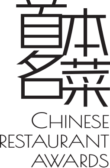By: Hatty Liu | Read Original
The media and anthropologists have known for some time that the prestige and price point of food from North America’s immigrant cultures is linked with the economic power of the home country. A combination of the quality of ingredients, the immigrant group’s habits, and price range are all on the menu, along with a solid sprinkling of pure cultural bias. These are what assign French food to white-tabled restaurants and Mexican fare to food trucks.
As China’s economy grows and Chinese dishes such as steamed buns and pancakes begin to appear in bistros and gastropubs of eastern American cities, a recent headline in The Atlantic recently felt confident enough to predict, “The Future is Expensive Chinese Food”.
If that is true, the future arrived 30 years ago in the Canadian Pacific coast city of Vancouver, and it has been changing faster than anyone can keep up.
“Excluding the cost of wine, Chinese food is some of the most expensive food in Vancouver,” Lee Man, food writer and judge of Vancouver’s Chinese Restaurant Awards, told TWOC. “It’s a really unique city in that way, and the word that really describes Vancouver’s Chinese dining scene is that it’s deep; you can find any regional cuisine, and different price ranges, and Chinese restaurants not just in Chinatown but all over the city.”
Long branded as Canada’s “Pacific Gateway”, Chinese immigration to the Vancouver region began with gold miners from San Francisco and picked up pace when thousands of workers were brought from impoverished regions of southeastern China to help build the Canadian Pacific Railroad. When the work was finished and locals were suddenly no longer interested in hiring Chinese—or preferred if they left town altogether—the Chinese headed north and east and fanned out across cities and small communities all across Canada. Those who stayed banded together in some of Canada’s first Chinatowns. Faced with nativist laws that barred them from most sectors of employment, restaurants were one of the only economic prospects open to these early migrants.
The foods they created reflected these harsh conditions and experiences of marginality. In Lily Cho’s Eating Chinese, the two dishes emblematic of early and “inauthentic” Chinese dishes, goo lo yok (sweet-andsour pork, a homophone of “white man’s meat”) and chop suey, were said to have been invented in the railroad camps and defined by limitations in available ingredients and willing palates. The vinegar and bone were left out of traditional Cantonese sweet-and-sour pork in favor of batter-coated sweetness, while the name “chop suey” literally referred to mixing together whatever ingredients one could find in the kitchen.
Over time, these dishes acquired a life of their own. They influenced the taste of further imported or invented dishes in migrant restaurants. They have also become a style of comfort food, the Friday night takeout ritual, and (as for the restaurant itself) a watering hole for the larger community, where migrant and Canadian experiences intersect during pub-crawl nights and hockey games.
These stories are familiar ones, repeated in cities and towns across Canada as well as the United States. Late 20th-century Vancouver, however, saw a pattern in immigration that was decidedly unique. The 1984 Sino-British Joint Declaration, which determined that Hong Kong would become a Special Administrative Region of the PRC in 1997, drove many of the wealthy in Hong Kong to remove themselves and their assets out of the territory before the handover. Vancouver was their major destination due to weather, relative proximity to Asia, and Canadian immigration policies that rewarded those with high education and funds to start businesses.
An estimated 167,000 Hong Kong immigrants settled in Canada between 1988 and 1991, and on the whole, around 30,000 immigrants were said to have settled each year in the decade until the handover. Compared to the pioneers of the early century, these migrants were backed by sheer numbers and wealth, as well as business connections and better communication with their homeland. These were all the necessary ingredients for a food revolution.



Big Chef, Jade Seafood Restaurant, from top to bottom, are all important Sea Harbour Seafood Restaurant, fixtures of the Vancouver dining scene and are changing the way people see Chinese cuisine
MORNING TEA TO SHANGHAINESE
In Richmond, British Columbia, a suburb of Vancouver where it is estimated that 49 percent of the population are ethnically Chinese, the phrase “going to eat breakfast” is often heard at 10 a.m. and almost certainly refers to dining out. As in Guangzhou and Hong Kong, breakfast takes place at Cantonese “morning tea” restaurants (many of which become seafood restaurants in the evening) and consists of a leisurely hour at the booth-style table with the blinds drawn, catching up on gossip and news amidst dim sum dishes and cups of tea.
To Man, Hong Kong immigration in the 80s and 90s was the significant turning point in the history of Chinese cuisine in Vancouver. “When I was growing up, all Chinese restaurants were in Chinatown,” Man said. Prejudice from landlords and neighbors, as well as general poverty, made Chinatown the de facto hub of the community. “All of a sudden, when a lot of Hong Kong people came, you could have Chinese restaurants in the ‘good’ parts of the city.”
As before, economic power brought with it the power to dictate the taste of food, only the trend was the reverse of 100 years before. According to Man, Hong Kong immigrants brought “a level of expertise that just didn’t exist in Vancouver at the time. There were experienced restaurateurs from Hong Kong, and also people who were just used to dining out, every day, so cooks had to cook at a high caliber,” he said. “Supply was there, and demand was there, and that raised the bar very quickly.”
In this era, how restaurants overcame rather than adjusted themselves to the limits of their new environment became the measure of their caliber. This manifested in a focus on investing in developing authentic flavors and keeping up with dining trends from the homeland. “At the peak of Hong Kong immigration, there was a bit more emphasis on refinement,” said Stephen Wong, a former touring chef and cookbook writer from the Vancouver area. “These were highend restaurants and the chefs sought fresh, local ingredients—they were cooking with Dungeness crab, for example, before any Western chefs were doing so.”
Notably, refinement not only had to do with the food, but the environment and service. “The sensations were a little different and the service was definitely different,” Wong added. “For example, the whole pretension of changing plates that was influencing Hong Kong at the time was seen here; instead of everything going on the table, the dish is brought to the table, displayed to you, and then put to the side.”






